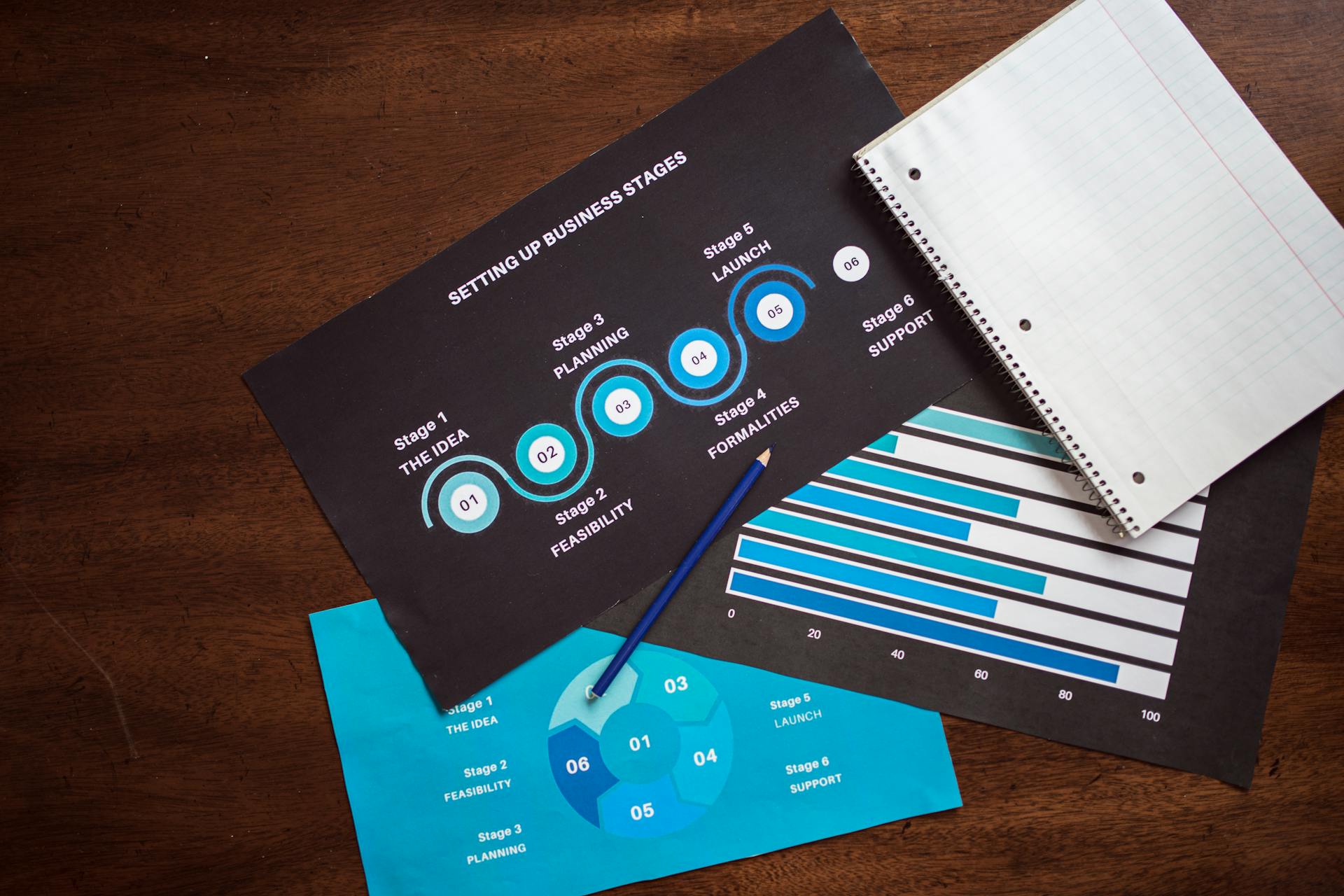Learn how to launch a product on Shopify from start to finish—including strategy, tools, templates, marketing tips, and optimization tactics. From building buzz to collecting post-launch feedback, this guide covers every stage for a successful product launch.
Key takeaways:
→ A great launch is a process, not a moment. Pre-launch prep, marketing, and post-launch analysis all matter just as much as the launch day itself.
→ Customer feedback is gold. Use early input to improve the product, messaging, and support before scaling further.
→ Your tools matter — especially for speed. Apps like Hyperspeed can prevent slow-loading pages from killing momentum during peak traffic moments.
Setting the Stage for a High-Impact Product Launch
Launching a product on Shopify isn’t just hitting “publish” and waiting for orders. It’s a strategic process that builds excitement, drives early sales, and sets the tone for long-term success.

Product Launch – Preparation
Whether you’re launching your first item or expanding an existing line, understanding the fundamentals of a successful product launch is essential.
And the stakes are high. According to industry research:
- 95% of new products fail — often due to poor positioning, weak messaging, or launching before the product is truly ready.
- A new product launch can cost anywhere from $10,000 to over $10 million, depending on scope, inventory, and marketing spend.
- Only 40% of developed products ever survive in the market, and just 1 in 5 consumers will buy a new product immediately after launch.
That’s the reality — but it’s also the opportunity. A thoughtful launch can:
- Create early momentum
- Strengthen your brand presence
- Provide valuable customer feedback
- Improve your long-term marketing efficiency
Even simple tactics — like email campaigns or teaser content — can significantly boost engagement and sales outcomes.
The difference between a failed product and a thriving one often comes down to the quality of the launch.
Types of Product Launches
Your launch approach depends on where you are in your business journey:
- Breaking in: Your first launch as a new store. Focus on building trust and clearly communicating your unique value.
- Brand extension: Adding to an existing product line. Leverage your current audience and customer data.
- Conquering new territory: Targeting a new market segment or region. Requires changes in messaging, strategy, and sometimes pricing or compliance.
The Product Launch Lifecycle
A typical launch includes three stages:
- Pre-launch: Research your market, finalize your product, and build anticipation through teaser campaigns and email outreach. Most of your effort happens here.
- Launch: Announce your new product, run promotions, and engage actively with your audience. This phase often lasts one to two weeks.
- Post-launch: Review feedback, track results, and refine your marketing strategy. Don’t skip this—long-term success depends on it.
Laying the Groundwork — Pre-Launch Planning
You can’t wing a product launch. Start by validating your idea, understanding your market, and setting goals that aren’t just hopeful guesses.

Product Launch – Pre-Launch
When to Start Planning
Ideally, begin planning your launch 8–12 weeks in advance.
Rushing the process risks inventory issues, missed marketing opportunities, and a disorganized customer experience.
The more complex your product or ambitious your sales goals, the more lead time you’ll need to get it right.
Validate Demand with Market Research
Before investing heavily in a new product, confirm that there’s demand—and a gap your product can fill.
- Identify unmet needs: Survey your customers, browse product reviews, and participate in forums or groups where your target audience discusses pain points. Great products solve real problems, not just add to the clutter.
- Analyze competitors: Understand who else is out there and how they position their offers. Compare pricing, features, and messaging to identify where you can stand out. A simple competitor matrix can help avoid costly missteps, like pricing too high or marketing too vaguely.
Want to make sure your site structure supports your launch goals?
Check out our website structure tips for Shopify and ecommerce.
Clarify Your USP and Product Benefits
Your unique selling proposition (USP) explains why someone should choose your product over alternatives. Don’t just highlight features – translate them into customer-facing benefits.
For example:
- Instead of “recycled packaging,” say “helps reduce waste in every order.”
- Instead of “extra-grip mat,” say “stays put, no matter how sweaty your workout gets.”
Avoid generic claims and aim for value that’s specific and memorable.
Want your product pages to actually convert?
Use these proven product page optimization tips for Shopify.
Set Launch Goals and Key Metrics
Clear goals help you track performance and course-correct. Some common product launch KPIs include:
- Sales revenue (first day/week/month)
- Number of units sold
- Conversion rate
- Email list growth
- Social media engagement
- Press or influencer coverage
- Customer satisfaction scores
Set realistic targets based on past store performance or industry benchmarks. Even modest early wins can validate your offer and guide your next steps.
Crafting a Compelling Product Launch Plan
If your launch lives in your head, it’s already falling apart. A clear plan keeps your timing sharp, your tasks organized, and your chaos minimal.

Product Launch – Launch Planning
Building a New Product Launch Plan
A strong product launch plan aligns your team and prevents confusion around priorities, timing, and responsibilities.
It should include a clear timeline, assigned tasks, dependencies between activities, and any decision or approval checkpoints.
The best way to build it? Work backward from your launch date.
For example, if you’re launching June 1st, determine when product photos are due, when the email campaign must be ready, and when influencer content should be submitted.
Reverse engineering your timeline reduces last-minute chaos and makes room for troubleshooting.
Assembling a Product Launch Template
Creating a reusable product launch template saves time and keeps future campaigns consistent.
A solid template includes the following sections:
- Product – Final product name and description, feature list, pricing, photos, videos, and packaging details.
- Customer – Target segments, pain points your product addresses, expected objections (and rebuttals), and feedback from testers or early users.
- Goals – Launch KPIs, such as revenue targets, units sold, email list growth, site traffic, and engagement benchmarks.
- Event Details – Launch date and time, special promotions, event format (virtual/in-store), and collaborators or influencers involved.
- Timeline – A week-by-week breakdown of key tasks. Example below:
Week Key Milestone 8 weeks before Finalize product and begin teaser campaign 6 weeks before Create and review marketing assets 4 weeks before Brief influencers and partners 2 weeks before Test website and checkout process Launch week Follow an hourly rollout schedule
- Communications – Include your marketing messages, a content calendar (email/social), press release plans, and outreach timing. This ensures consistency across channels and avoids duplicated or missed messages.
Developing the Product Launch Checklist
A comprehensive checklist keeps you from skipping critical tasks.
Instead of listing every single one like a to-do list tattoo, here’s how you can group them logically:
- Pre-launch involves finishing product testing, finalizing pricing and budget, building the landing page, creating marketing assets, and setting up email flows. Influencer partnerships and approvals should also be locked in here.
- Development & Testing covers product sample approvals, site and mobile testing, payment system setup, and ensuring everything works smoothly for the user.
- Logistics includes inventory receipt and inspection, fulfillment testing, backup supplier planning, and customer support readiness—plus an updated FAQ.
- Product Launch Day focuses on executing communications (emails, social, PR), making the site live, and actively monitoring performance while support stands by.
- Post-launch tasks include sending thank-you emails, collecting feedback, requesting reviews, analyzing KPIs, and publishing follow-up content to extend your campaign’s life.
Managing Product Development and Testing
Make sure your product is actually ready before you launch it—shocking advice, I know. The best way to ensure that? Test it early, test it often.
- Preview Programs allow a select group of loyal customers to try your product before launch. Their feedback can reveal usability issues or unclear instructions—like confusing packaging or missing info.
- Early Access lets trusted users purchase the product before the general public, usually at a discount. This creates buzz and gives you a final round of real-world validation before the full launch.
- Beta Testing involves offering your product to a small group (typically over several weeks or months) to gather deeper feedback and make necessary adjustments. This is especially useful for subscriptions or complex products.
Don’t just ask vague questions like “Did you like it?”
Instead, ask targeted ones like “Was the packaging easy to open?” or “Did this solve your specific problem?”
Clear, specific questions give you feedback you can actually use — not just vague praise or silence.
Creating Buzz: Pre-Launch Campaigns
No one’s buying what they don’t know exists. Build anticipation with teaser content, early access, and marketing that actually excites people.

Product Launch – Creating the Buzz
Teaser Campaigns and Landing Pages
Building anticipation is one of the most effective ways to prime your audience before launch.
A good teaser campaign subtly introduces the problem your product solves, hints at a coming solution, and invites people to sign up for updates—without revealing too much too soon.
Your teaser landing page should stay focused: a strong headline that speaks to your audience’s pain point, a brief message teasing what’s to come, compelling visuals, and one clear call-to-action to join the waiting list.
If you have a firm launch date, a countdown timer can add urgency. Keep copy concise; teaser pages that convert well often say less, not more.
Building a Waiting List and Using Pre-Orders
A waiting list serves two purposes: it gauges real interest and builds an email list you can activate on launch day.
Incentivize signups with early access, discounts, or bonuses, and nurture interest through regular updates. You can also use this period to ask your audience questions and gather insights about their needs.
Pre-orders take this a step further – they validate demand and generate revenue before the product is even in stock. Set clear delivery expectations, offer exclusive perks, and communicate progress often.
On Shopify, apps like Pre‑Order Now make it easy to enable pre-orders without custom code.
Leveraging Influencer Marketing
Influencers can help you expand your reach, especially during the pre-launch phase.
You don’t need celebrity endorsements – micro-influencers (10k–50k followers) often deliver stronger engagement and trust with niche communities.
Begin outreach at least 6–8 weeks before launch.
Provide free product samples, campaign guidelines, affiliate links or discount codes, and suggested timelines for posting.
Focus on alignment over control—give talking points, not scripts. The best partnerships feel authentic, not transactional.
Engaging Customers Through Email Marketing
Email is still one of the highest-converting launch channels. A basic pre-launch sequence might include:
- An email introducing the problem
- A follow-up hinting at your upcoming solution
- A behind-the-scenes look at product development
- A customer story or testimonial
- A preview of key benefits
- A final announcement with early access or launch details
Keep emails short, personal, and focused on benefits, not specs. A single clear CTA per message outperforms cluttered layouts.
Subject lines matter—test a few and pick the winner.
Press Releases and Product Announcements
Traditional PR still works – if you’re strategic.
One strong media placement can drive thousands of qualified visitors. Write your release like a news story: lead with a sharp headline, cover the 5 Ws in the first paragraph, and include a relevant quote and supporting data.
Always add high-res images, contact info, and background on your brand.
Avoid mass distribution platforms.
Instead, send personalized pitches to industry-specific journalists, niche blogs, or local media outlets. If you make it clear why their audience would care, your chances of coverage go way up.
Product Demo Videos and Promotional Assets
Great visuals increase conversion.
Even a simple 60-second demo video can drastically improve results. Focus on assets that show your product in action, highlight core benefits, and compare it visually to alternatives. Essentials include:
- Lifestyle photography
- Multi-angle product shots
- Short demo videos or GIFs
- Infographics or side-by-side comparison visuals
- Customer testimonial graphics
You don’t need fancy gear. A smartphone, natural light, and basic editing software can go a long way.
Aligning Messaging Across Teams
Consistent messaging builds credibility.
Disjointed communication between social, email, and customer service undermines trust. Even if your “team” is just you and your cat, it helps to create a one-page messaging guide that includes:
- Key selling points and customer benefits
- Short and long product descriptions
- Approved language and common questions/answers
- Pricing, discount policies, and launch promotions
If you’re working with sales partners or affiliates, send them plug-and-play materials: email templates, social captions, image packs, and an FAQ.
Clear internal communication = stronger external results.
Launch Execution: Going Live with Impact
Launch day isn’t the end—it’s the performance. Here’s how to show up strong, avoid disasters, and make your product impossible to ignore.

Product Launch – Going Live
Launch Event Planning
A launch event creates urgency and excitement, even if it’s simple.
Virtual events like Instagram Live work great — demo the product, answer questions, offer a limited-time promo, and record it for replay.
Physical events? Keep them on-brand, offer product samples, and collect emails. The key isn’t budget – it’s engagement.
Social Media Launch Strategy
Break your content into three phases.
Before product launch, post countdowns, teasers, behind-the-scenes looks, and influencer previews.
On launch day, go live, share milestones, and respond to comments. Afterward, highlight testimonials, unboxings, and answer FAQs.
Encourage user-generated content with contests or hashtags—it’s free, powerful social proof.
Sales and Distribution Readiness
Avoid new product launch disasters by prepping both store and logistics.
Your Shopify site should be mobile-friendly, with tested checkout flows, working discount codes, and proper tracking.
On the back end, have 30% more inventory than expected, packaging stocked, staff trained, and a backup plan in place.
Your site’s speed can make or break your launch. Read our Guide to Optimizing Ecommerce Performance.
How fast is your Shopify store?
Compare how fast your store is to a huge sample of other stores. Get benchmarked and find out where you can improve your speed to make more sales.
Customer Support and Real-Time Feedback
Launches bring questions – be ready.
Prep canned replies, set up a support email, extend hours, and install live chat if possible. Track feedback in a shared doc to spot patterns fast.
If something breaks, own it and fix it quickly. Transparency earns trust.
Handling the Unexpected
Something will go wrong – accept it and plan ahead.
For likely issues (site crashes, delays, stock problems), create mini response plans: what to watch for, how to respond, what to say, and who’s in charge.
A little prep turns disasters into speed bumps.
Post-Launch Optimization
The real growth starts after launch. Track your results, listen to customers, and use what you learn to make your next move even better.

Product Launch – Post-Launch
Gathering and Analyzing Customer Feedback
The first days after a product launch are gold for feedback.
Pay attention to post-purchase surveys, reviews, social media comments, and support interactions. Don’t fixate on isolated complaints – instead, look for repeating patterns. For example, if multiple customers struggle with a product feature, it’s a cue to improve instructions or the design itself.
Use a simple 1–5 scale to rate issue severity and prioritize fixes efficiently.
Measuring Conversion Rate and Launch Success
Your KPIs aren’t just decoration – now’s the time to see how you performed.
Analyze conversion rates by traffic source, average order value, abandonment rates, email engagement, and ad ROI. If one channel outperformed another (say, Instagram > Facebook), shift future spend accordingly.
Don’t just hoard data – schedule a post-launch review within two weeks to turn insights into strategy.
Post-Launch Marketing Strategies
Launch isn’t the finish line – it’s the runway.
Keep momentum going with retargeting campaigns that address objections and sweeten the deal, content marketing that supports product use, and post-purchase emails that build engagement. Your email sequence should include order confirmations, delivery updates, tips for use, review requests, and future product suggestions.
One of the best follow-ups? An email titled “Did we mess up?” to non-reviewers – it’s a sure way to get an open rate and bring in dozens of reviews overnight.
How to Build on Post-Launch Wins
Use early traction to drive long-term growth.
Plan a product update within 60–90 days based on feedback, and publicize improvements to show customers you’re listening.
Launch a loyalty program while excitement is still fresh—think reward points, referrals, VIP tiers, and early access to new releases.
These programs don’t just build loyalty; they lift customer lifetime value significantly.
Creating a Long-Term Customer Retention Plan
Customer acquisition is expensive.
Retention? Way more profitable.
Use segmented email campaigns, subscriptions for replenishable products, and exclusive content to stay connected. Build a customer community on social platforms, send surprise gifts or handwritten thank-you notes, and don’t let engagement drop after the sale.
A well-timed gesture or message post-purchase can turn one-time buyers into repeat champions.
Considering expanding beyond Shopify?
Here’s Why You Don’t Have to Choose Between Shopify and Etsy.
Lessons Learned from Failed Product Launches
Failures teach us as much as successes.

Product Launch – Lessons From the Pit
Here are key lessons from notable launch failures:
Amazon Fire Phone failed because it solved Amazon’s problems (getting people into their ecosystem) rather than customer problems.
Lesson: Always focus on customer needs first.
Google Glass launched before the product was ready for everyday use and didn’t clearly explain why consumers needed it.
Lesson: Don’t rush to market before identifying a clear use case.
New Coke famously flopped because Coca-Cola didn’t understand that their existing product had emotional value beyond taste.
Lesson: Test not just product acceptance but emotional reaction.
Small Shopify stores make common mistakes too:
- Launching without sufficient inventory (causing backorders and customer frustration)
- Setting prices too low initially (making it hard to raise them later)
- Not testing the checkout process thoroughly (losing sales at the final step)
- Overinvesting in packaging before validating the product (wasting startup capital)
Start simple and upgrade based on feedback!
Tools, Templates, and Resources
Why make it harder than it has to be? These tools and templates help you stay focused, move faster, and skip the guesswork.

Product Launch – Resources
Product Roadmap Tools
Keeping track of your product development is key to launching smoothly – no one wants to realize the product isn’t finished during launch week.
For technical teams, Jira is a powerhouse for tracking bugs, features, and sprint progress, while Confluence complements it by documenting specs, timelines, and processes in one shared hub.
If your needs are simpler (or your budget is), tools like Trello, Airtable, and Notion offer flexible visual planning and collaborative docs.
- Trello’s kanban boards are great for timelines
- Airtable is excellent for blending task tracking with product specs
- Notion works well as an all-in-one planning wiki.
- ProductBoard if you need to prioritize features based on customer feedback.
Templates for Launch Emails and Press Releases
Never start from a blank page. Launch emails follow a predictable rhythm that you can template and reuse:
| Email Type | Purpose |
| Teaser Announcement | Introduce the problem you’re solving |
| “Coming Soon” Reminder | Build anticipation and FOMO |
| Launch Day Announcement | Drive immediate traffic and urgency |
| Early Access Invitation | Reward your list or VIPs |
| Last Chance for Pre-Order | Nudge fence-sitters |
| Official Launch Email | Celebrate and push conversions |
| Post-Launch Follow-Up | Gather feedback and reviews |
Press releases also benefit from structure.
A strong release includes a compelling headline, a concise opening paragraph (who, what, when, where, why), a quote from the founder or product creator, product availability info, your company background, and media contact details.
End with a clear call to action – whether it’s for coverage, interviews, or review units.
How fast is your Shopify store?
Compare how fast your store is to a huge sample of other stores. Get benchmarked and find out where you can improve your speed to make more sales.
Launch Plan Templates and Checklists
Planning gets way easier with reusable documents.
Some go-to templates include a master launch timeline, a budget calculator, a marketing channel planner, a daily schedule for launch week, a team contact list, and a risk assessment doc. All can be simple Google Sheets or Docs; no fancy formatting required. Tweak after every launch to reflect missed points or misjudged responses.
Recommended Shopify Apps for Launch Management
The right apps can do a lot of the heavy lifting during your launch –but only if they’re solving actual problems.
| App | Function |
| Countdown Timer Bar (Hextom) | Adds urgency during launch |
| Back in Stock (Swym) | Collects emails for sold-out items |
| Privy / Klaviyo | Email marketing and pop-ups |
| Stamped.io / Loox | Review collection and display |
| Shogun / PageFly | Build custom landing pages |
| AfterShip | Shipment tracking and alerts |
| Zipify OCU | Add one-click upsells to boost AOV |
| Hyperspeed | Site speed optimization for faster load times |
Be strategic – install what you need, not what looks shiny. Every extra app can slow your store, so prioritize performance and simplicity.
From Launch Pad to Liftoff
Launching a product on Shopify is a process – one that works best when treated as a series of intentional steps.

Product Launch – Launch Pad to Liftoff
From early research to post-launch refinement, each phase builds on the last. Skipping ahead or cutting corners usually means missed opportunities or messy recoveries. But when you give every phase the attention it deserves, you set yourself up for long-term growth, not just a short-term spike.
If this is your first product launch, take a breath.
You don’t have to be perfect – you just have to start. Focus on solving a real problem for your customers, communicate clearly, and pay close attention to the feedback that comes in. Your first launch is a foundation, not a final exam.
To get moving, define your product’s unique value, understand who you’re selling to, and work backward from your ideal launch date to create a manageable plan. Choose just a couple marketing channels, start building your email list, and check in regularly with yourself or your team to stay on track.
The more you launch, the better you’ll get. So treat this as a skill, not a one-off task. Learn from it, document what works, and apply those lessons to the next one.
- Rank higher on Google with faster load times
- Deliver a seamless shopping experience
- Boost your sales with optimized performance 🚀
Frequently Asked Questions
What are the key steps in a successful Shopify product launch?
A successful product launch includes pre-launch planning, market research, building buzz with a teaser campaign, refining your launch strategy, executing your launch plan, and optimizing post-launch with customer feedback, sales data, and conversion rate analysis.
How far in advance should I plan my Shopify product launch?
Start your product launch planning at least 8–12 weeks before launch day. This gives you time for product development, market research, influencer marketing, and creating a launch checklist that ensures a smooth launch event and an effective marketing campaign.
What is the best way to build buzz before a product launch?
Use a teaser campaign, influencer marketing, and social media to generate buzz. A compelling landing page, email signup, and early product demo can engage your target audience and grow brand awareness before you announce the new product officially.
How do I measure the success of my product launch?
Measure product launch success using metrics like conversion rate, sales volume, customer feedback, email engagement, and traffic by source. Compare results to your launch goals to evaluate your go-to-market strategy and refine your product positioning.
What should be included in a product launch checklist?
A complete product launch checklist includes pre-launch tasks like finalizing product features, setting launch goals, prepping your Shopify store, crafting product messaging, scheduling a launch party or event, sending a press release, and planning post-launch follow-up.



